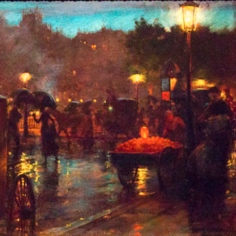
“Nocturne, Paris” by Alfred Maurer. Credit: Bruce Museum
By KAREN SHEER
The Bruce Museum exhibit, “Electric Paris,” transports visitors to 19th-century Paris as the light shaped the works of numerous modern artists.
The exhibit was meticulously curated by Margarita Karasoulas, a former Bruce Museum intern and now a Ph.D. candidate art history at the University of Delaware. She describes en plein air where a painter reproduces the actual visual conditions seen at the time of the painting.
She explains, “we are presenting the exhibition into four thematic sections: Nocturnes, Lamplit Interiors, Street Light, and In and Out of the Spotlight, which examines the spectacle of artificial light in Parisian cafés, theaters, dance halls, and cabarets.”

In the Luxembourg Gardens, 1879, by John Singer Sargent. Credit: Karen Sheer

Place de Rome at Night, 1905, by Theodore Earl Butler. Credit: Bruce Museum
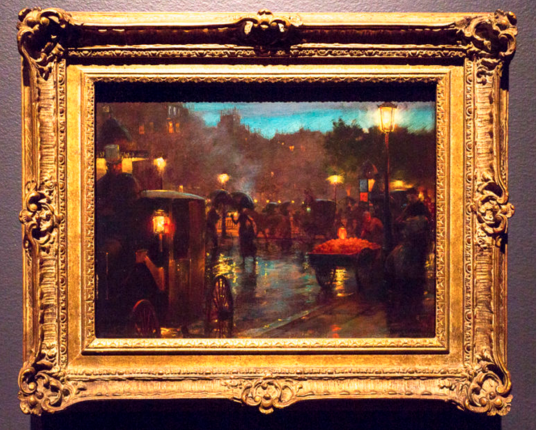
Paris at Night, 1889, by Charles Courtney Curran. Credit: Karen Sheer
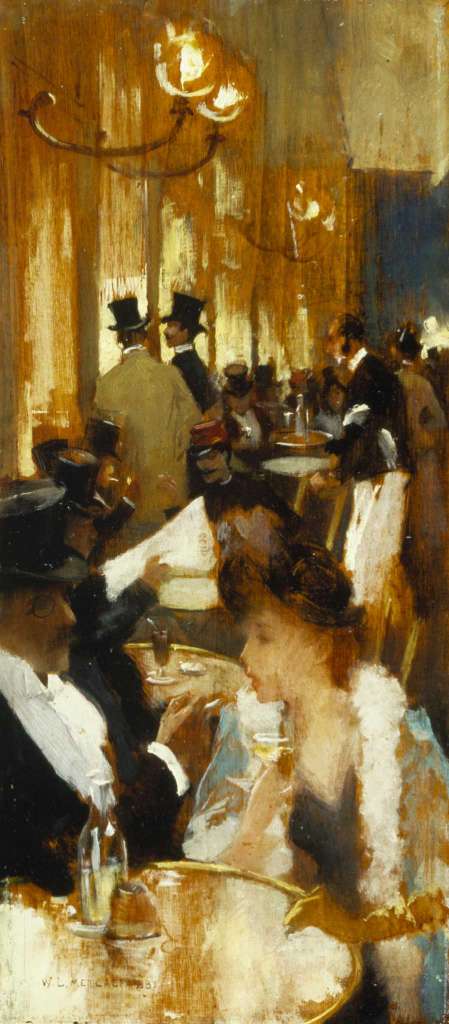
Au Café, 1888, by Willard Metcalf. Credit: Bruce Museum

The Green Room (Interior, Vestibule by Lamplight), 1904, by Félix Vallotton. Credit: Karen Sheer
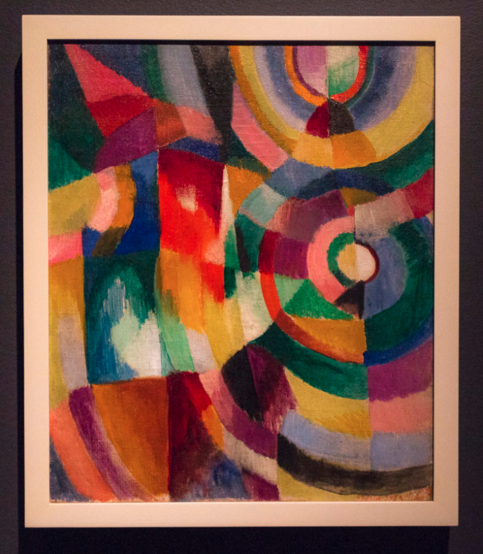
Electric Prisms, 1913, by Sonia Delaunay-Terk. Credit: Karen Sheer
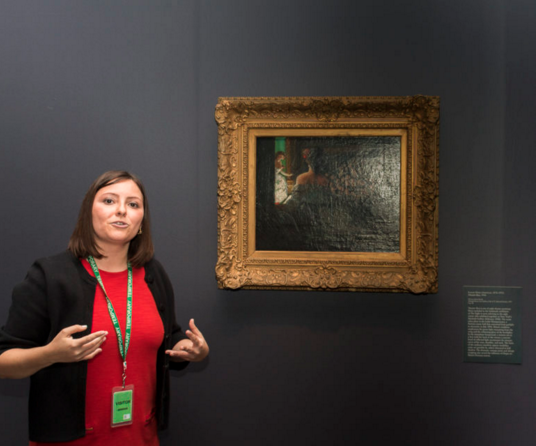
Curator Margarita Karasoulas walks the press through this impressive show. Credit: Karen Sheer
In the late 17th and 18th centuries, Paris became known as the “City Of Light” — a metaphor for its reputation as an enlightened center of reason and forward thinking. At night, however, its streets and boulevards could be dark, scary and dangerous.
But in the 19th century, with the advent (and popularity) of gas lamps and electricity, Paris’ epithet became a reflection of a new reality. As Paris was creatively bedecked in artificial light, street and café life exploded — contributing to a dazzling nightlife indoors and out.
Some of the most well known American and French painters of the time working in oil paintings, drawings, prints and photographs: Edgar Degas, Mary Cassatt, Pierre Bonnard, Édouard Vuillard, Henri de Toulouse-Lautrec, Jean Béraud, James Tissot, Charles Marville, Childe Hassam, Charles Courtney Curran, Alfred Maurer and Maurice Prendergast.
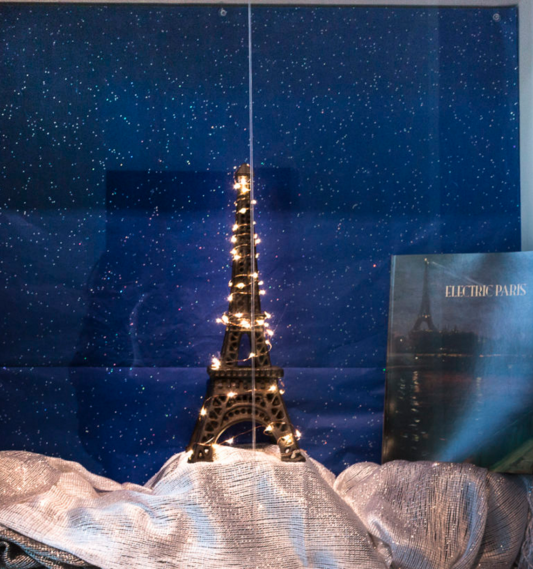
A display at the museum entrance. Credit: Karen Sheer
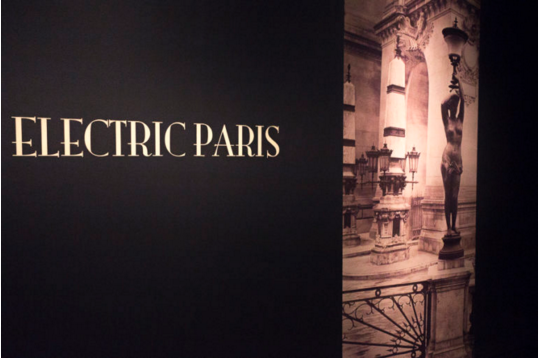
Credit: Karen Sheer
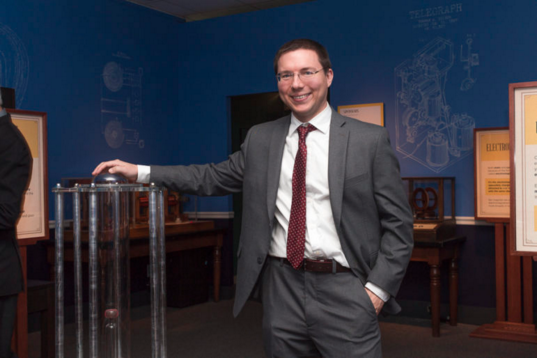
Daniel Ksepka, science curator at the Bruce, with a plasma tube. Credit: Karen Sheer
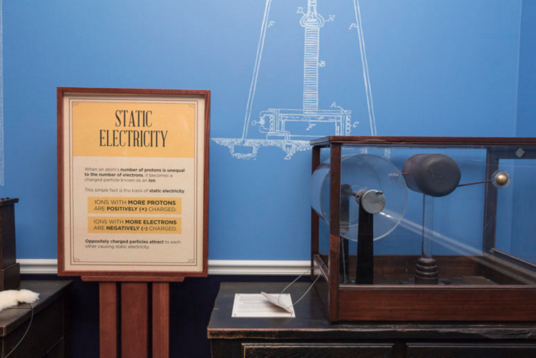
Credit: Karen Sheer
A complimentary exhibition, “Electricity,” brought to Connecticut by way of The Franklin Institute in Philadelphia. “Electricity” runs through Nov. 6 and promises interactive experiences for visitors of all ages.
Curator Daniel Ksepka, science curator at the Bruce, says visitors can learn the fundamental principles behind electricity such as magnetic fields, electric charges, and battery technology. Sparks will fly (safely) as museum-goers examine concepts such as static electricity, attraction and repulsion, sparking, magnetic motion.
Guide-by-Cell self-guided audio tours are available for ‘Electric Paris.’
